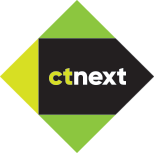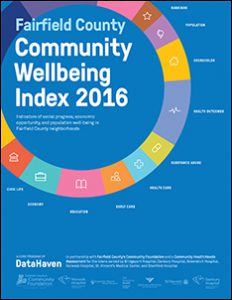Insurance Department Recovers $7.5 Million for Policyholders, Taxpayers in 2016; Highest Total in 4 Years
/Connecticut’s Insurance Department recovered $7.5 million for policyholders and taxpayers in 2016, helping individuals, families and employers with their claims and complaints. That is the highest amount in four years and an increase from the $6 million that the department saved taxpayers and policyholders the previous year.
“Connecticut consumers turn to us every year to help them with claims and coverage issues or to just answer questions about their insurance,” said Insurance Commissioner Katharine L. Wade. “Our intervention in 2016 helped thousands of policyholders get much-needed answers, resolution and the benefits to which they are entitled.”
Consumer recoveries and industry fines totaled approximately $6.3 million in 2014, $7.3 million in 2013 and approximately $8.7 million for policyholders and state taxpayers in 2012, the high water mark in recent years.
Commissioner Wade said among the many cases the Department worked on during 2016 was a dispute that involved nearly $170,000 in hospital bills for a victim of a car accident. The patient had health care coverage under two plans – through his employer and as a dependent on his parent’s health insurance. When a dispute arose over which plan was the primary payer, the Department stepped in and determined it was the employer’s plan, which then covered the claims. Another case involved a motorist whose car was totaled in an accident. When motorist’s insurer initially denied her claim, the Department required that the insurer review the case further. The insurer subsequently paid 100 percent of the motorist’s claims.
The Department’s Consumer Affairs Unit (CAU) fielded more than 5,800 complaints and inquiries and helped policyholders recoup nearly $6 million from January 1 to December 31, 2016, according to officials. Also in 2016, the Department’s Market Conduct division levied approximately $1.6 million in fines against carriers and returned that money to the state’s General Fund. The fines resulted from a variety of violations and settlements ranging from untimely claim payments to improper licensing, the department said.
The majority of the funds recovered for policyholders stemmed from complaints over health, accident, homeowners and life and annuities policies. The breakdown of funds recovered in 2016:
- Accident, Health - $3.63 million
- Auto - $432,000
- General Liability - $33,710
- Homeowners and Commercial Property - $874,250
- Life, Annuities - $820,000
- Miscellaneous - $160,000
The department announced this month that licensing renewal notices for casualty adjusters and motor vehicle property damage appraisers will now be handled online, with an anticipated savings of nearly $40,000 in processing and mailing costs.The renewals also are now processed online through the National Insurance Producer Registry (NIPR). The licenses expire on June 30, 2017 and are good for two years. The casualty adjuster renewals are expect to generate approximately $6 million for the General Fund.
“The Department is now emailing renewal notices to the 73,000 casualty adjusters and motor vehicle property damage appraisers in Connecticut improving efficiency by saving time and shedding thousands of dollars in mailing and postage costs,” Wade said.
The Department calculates its consumer recoveries based on what the policyholder received as a result of the Department’s intervention. The inquiries and complaints also help the Department identify industry trends that may adversely affect consumers and trigger investigation by the Market Conduct division. Complaint data also help determine topics for consumer education and serve as tools to help the Department monitor the industry. The Market Conduct enforcement actions are posted on the Department’s Web site at www.ct.gov/cid


 “More than Food focuses on promoting healthy food in pantries and helping people access other resources to find a job. We’re proud to support a partnership that is trying to find a solution to the hunger problem,” said Chris Traczyk, executive director of the Farmington Bank Community Foundation. “It’s a comprehensive, collective-impact project.” Dr. Katie Martin, assistant professor and director of the Public Health Program at USJ, and her research team developed a nutrition stoplight system called Supporting Wellness at Pantries, or “SWAP”, which helps food pantry clients choose healthier foods.
“More than Food focuses on promoting healthy food in pantries and helping people access other resources to find a job. We’re proud to support a partnership that is trying to find a solution to the hunger problem,” said Chris Traczyk, executive director of the Farmington Bank Community Foundation. “It’s a comprehensive, collective-impact project.” Dr. Katie Martin, assistant professor and director of the Public Health Program at USJ, and her research team developed a nutrition stoplight system called Supporting Wellness at Pantries, or “SWAP”, which helps food pantry clients choose healthier foods.

 The Connecticut Technology Council's annual
The Connecticut Technology Council's annual  Data used to create the ranking were collected from U.S. Census Bureau, Bureau of Labor Statistics, National Science Foundation, National Center for Education Statistics, Georgetown University’s Center on Education and the Workforce, United States Patent and Trademark Office, Ewing Marion Kauffman Foundation, Tax Foundation, Consumer Technology Association, Akamai Technologies, U.S. Cluster Mapping Project and National Venture Capital Association.
Data used to create the ranking were collected from U.S. Census Bureau, Bureau of Labor Statistics, National Science Foundation, National Center for Education Statistics, Georgetown University’s Center on Education and the Workforce, United States Patent and Trademark Office, Ewing Marion Kauffman Foundation, Tax Foundation, Consumer Technology Association, Akamai Technologies, U.S. Cluster Mapping Project and National Venture Capital Association.

 Sung Soon Gavel won a CLS to study Korean at Chonnam National University in Gwangju, South Korea. The CLS Korean Program in Gwangju, Korea provides students opportunities to learn Korean both inside the classroom and in an immersive cultural setting during an intensive 8-week language program set in Korea’s sixth-largest city located just south of Seoul. Students receive a minimum of 20 hours per week of classroom instruction where they learn the four major skills of speaking, listening, reading and writing in Korean.
Sung Soon Gavel won a CLS to study Korean at Chonnam National University in Gwangju, South Korea. The CLS Korean Program in Gwangju, Korea provides students opportunities to learn Korean both inside the classroom and in an immersive cultural setting during an intensive 8-week language program set in Korea’s sixth-largest city located just south of Seoul. Students receive a minimum of 20 hours per week of classroom instruction where they learn the four major skills of speaking, listening, reading and writing in Korean.

 In terms of average student debt, among the states with the highest levels, after Connecticut, are New Hampshire (#49), Pennsylvania (#48), Rhode Island (#47), Delaware (#46), Massachusetts (#45), New Jersey (#44), Minnesota (#43), Iowa (#42), South Carolina (#41), and New York (#40).
In terms of average student debt, among the states with the highest levels, after Connecticut, are New Hampshire (#49), Pennsylvania (#48), Rhode Island (#47), Delaware (#46), Massachusetts (#45), New Jersey (#44), Minnesota (#43), Iowa (#42), South Carolina (#41), and New York (#40). 46,440 students, according to the website. The 4th Congressional District has a total college enrollment of 21,537, just behind the 3rd District (46,440) and 5th District (22,451). The 2nd Congressional District has the smallest enrollment total in the state, at 11,605.
46,440 students, according to the website. The 4th Congressional District has a total college enrollment of 21,537, just behind the 3rd District (46,440) and 5th District (22,451). The 2nd Congressional District has the smallest enrollment total in the state, at 11,605.

 During the working group’s December meeting, which ran just over an hour, participants from 27 colleges and universities, including the presidents of most of the institutions, discussed the challenges and opportunities to advance innovation and entrepreneurship on their campuses and in the state.
During the working group’s December meeting, which ran just over an hour, participants from 27 colleges and universities, including the presidents of most of the institutions, discussed the challenges and opportunities to advance innovation and entrepreneurship on their campuses and in the state.



 d childcare slots for fifteen percent of the county’s children ages 0 to 2, and enough subsidized slots to cover only twenty-two percent of these youngest children in low-income households.
d childcare slots for fifteen percent of the county’s children ages 0 to 2, and enough subsidized slots to cover only twenty-two percent of these youngest children in low-income households.
 ped the list in two additional categories: Lowest Percentage of Adults Who Experienced Pain in the Past Year Due to Oral Condition and Lowest Sugar-Sweetened Beverage Consumption Among Adolescents. The state also ranked in a tie for third for having the lowest percentage of elderly population with no natural teeth.
ped the list in two additional categories: Lowest Percentage of Adults Who Experienced Pain in the Past Year Due to Oral Condition and Lowest Sugar-Sweetened Beverage Consumption Among Adolescents. The state also ranked in a tie for third for having the lowest percentage of elderly population with no natural teeth.
 serves as an expert resource on oral health policy; and publicizes oral health policy analysis and recommendations.
serves as an expert resource on oral health policy; and publicizes oral health policy analysis and recommendations.



























